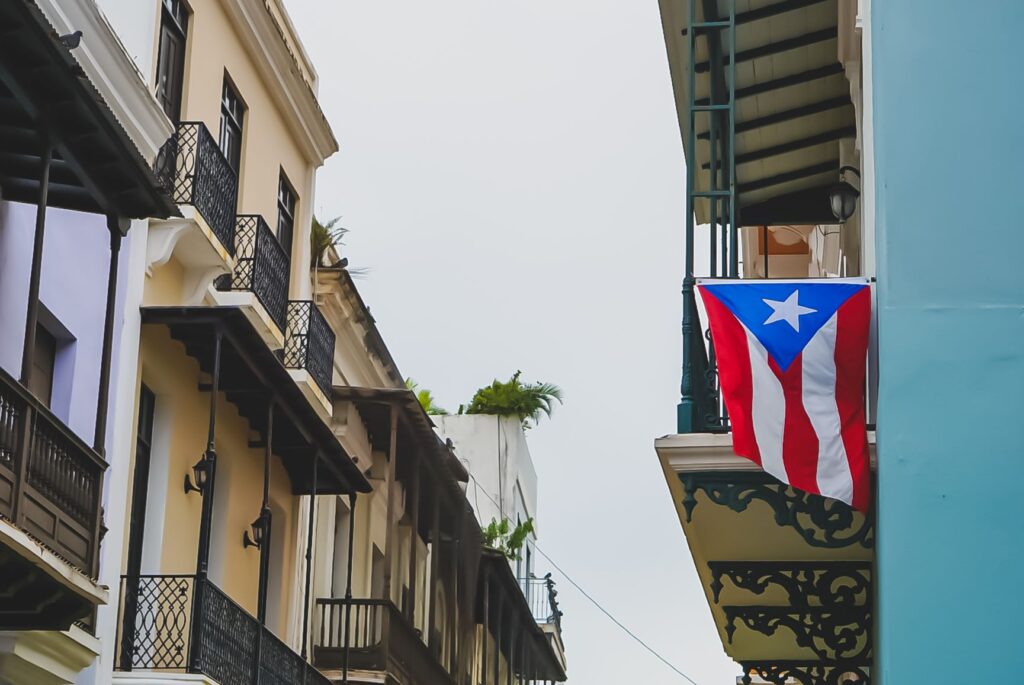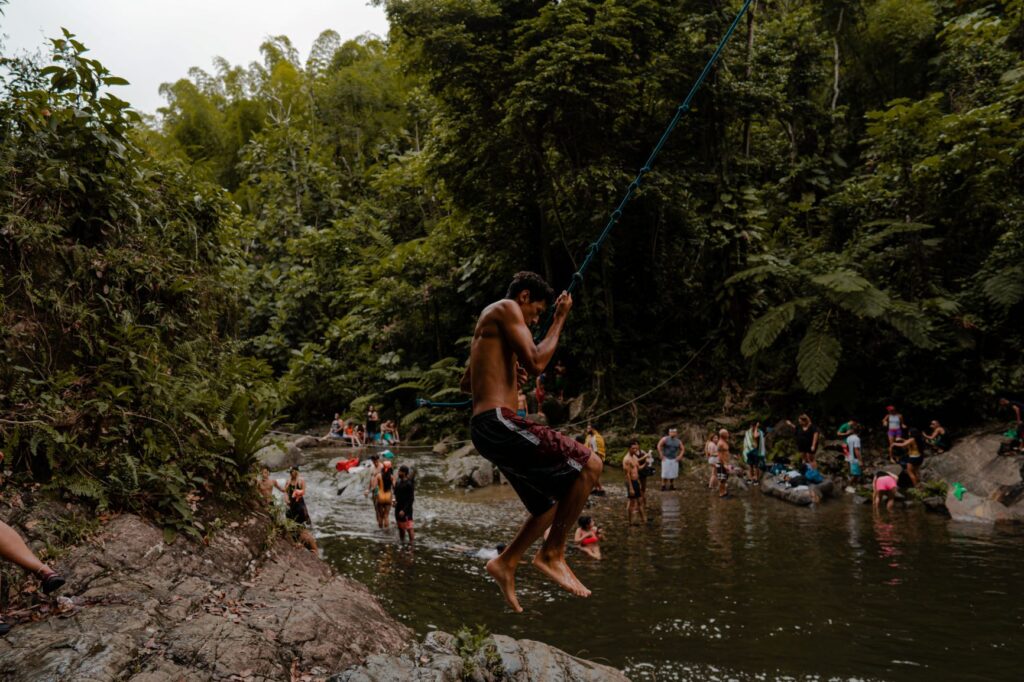A few days after Christmas, my wife and I attended a 6-day EF Convention Tour in Puerto Rico, or in English, “rich port.” It was our first visit to the beautiful island and we enjoyed celebrating New Year’s there with several other teachers and Group Leaders from around the country. On the flight home, I jotted down some tips for traveling to Puerto Rico, especially for those who have never gone before.

Photo by Tatiana Rodriguez on Unsplash
1. No passport needed
Some people may not realize that Puerto Rico is a commonwealth of the United States, so a passport is not needed for American citizens traveling to and from Puerto Rico. During the most recent election, in fact, the people of Puerto Rico held a vote to determine whether they should seek statehood, with over half the people voting in favor of statehood. Nevertheless, not having to purchase a passport will save some travelers a little extra cash. It will also save everyone some time by not having to pass through immigration and customs.
2. Brush up on your Spanish, if you want to
Most people would recognize that Puerto Ricans speak Spanish. Both English and Spanish, however, are considered national languages and English is quite common on the island. Students learn to read, speak, and write both languages from the beginning days of their schooling. Travelers may speak the language that they are comfortable with, or even converse with both. The people on the island seem to be very patient with and welcoming to those wanting to practice their Spanish. Don’t be surprised to come across words or phrases that are neither English nor Spanish. The original inhabitants of the island were an indigenous group called the Taínos. Their native language is still spoken by some people on the island and several words and phrases from this language are also commonly used, even though spelling seems to vary. Did you know that the word hurricane comes from “jurakan,” which is the Taíno word that means “storm”? Or that the word “hammock” comes from the Taíno word “jamaka”?
3. No need to exchange currency
Puerto Rico uses the U.S. Dollar so there is no need for Americans to exchange money. Cash, debit, and credit will work just fine. ATM’s are located just about everywhere and are easy to access and use.
4. Hunt for a bargain and explore at the same time
Food and drink are quite expensive in Puerto Rico. After purchasing a few beverages at our hotel upon arrival, I was shocked when I got the tab. I learned the same while purchasing a sandwich in a local restaurant. I’m not sure if the high prices are due to the cost of having to ship everything into the island or if it’s simply the fact that the island is a popular tourist destination. Maybe it’s a little of both. What we did learn, however, is that by venturing off the beaten path just a little and speaking with the locals, or people familiar with the island, we were able to find food and drinks at a much lower price. That same hotel drink I had for $6 I found later for $1.50. That’s quite a difference. Sometimes the atmosphere we found was a little more authentic, too. I understand that we pay for convenience. If you’ve got the time, however, spend it looking for a much better bargain. It just might lead you to some interesting sights that you may not have otherwise experienced.
5. Buyer beware
Many travelers like to purchase souvenirs for themselves or as gifts for others. But be careful. Like in many other countries, some of the souvenirs really aren’t authentic. Check to see where they were made. You might be surprised to discover that many are actually made in China or even Taiwan. If you are looking for something truly made in Puerto Rico, simply study the item closely to look for the location in which it was made.

Photo by Cristian Escobar on Unsplash
6. Swim at your own risk
Puerto Rico is surrounded by a beautiful sea and ocean that splash upon gorgeous beaches. Don’t let the beauty fool you. The water surrounding Puerto Rico can be just as dangerous as it is beautiful. At one point, signs were posted in areas where swimming was not allowed due to the dangers of strong riptides and undertows. The Puerto Rican government decided that these signs hurt tourism and elected to have them removed. Some places have warnings posted, but swimming is now allowed. There are safe places to swim, such as some locations that are in a protected bay. Other places have been created by placing a line of large rocks parallel to and at a safe distance from the shore. As a result, swimmers are protected from riptides and undercurrents.
7. Don’t underestimate the sun
The national anthem of Puerto Rico refers to the island as being the daughter of the sun and of the sea. We’ve already discussed the dangers of the sea, but don’t forget about the sun either. Many people travel to sunny destinations to escape the cold weather of their origins. Speaking from experience, it felt great to soak up the sun for a few hours while exploring the forts in Old San Juan. But before I knew it, it was too late. I was absolutely fried from the sun. For some reason, I didn’t think that my pale skin needed any sunscreen for just a few hours of exposure while walking around. My poor error in judgment meant that I needed to stay out of the sun for the next couple of days. Fortunately, we had plans to spend the next day in the rainforest, El Yunque, and battling the sun wasn’t an issue. Lesson learned. Make sure to apply sunscreen regularly to ensure that part of the trip isn’t lost due to having to hide from the sun.
8. Soak in the culture
While in San Juan, we made sure to treat ourselves to at least one nice dinner. We found an outstanding restaurant that served excellent local cuisine. We were also treated to a colorful blend of Puerto Rican music and dance while dining in an open-air patio. I also have to add that we shared great conversation and a unique booth with some friends we met on tour. The booth actually swayed back and forth as we pushed with our feet. How cool is that? We also had the experience of being entertained by various street performers that came and went throughout our dinner. My wife and I cherish these memories just as much, if not more, than some of the souvenirs we bring home.

Photo by Michael Oxendine on Unsplash
9. Book some excursions
There’s no question that spending time at the beach with a good book is a must. But there’s so much more to Puerto Rico than just its beautiful beaches. Do some research on-line or check with your hotel about booking excursions and recommended companies that offer them. Our guide explained to us that if you book directly with the company offering the excursion, you are likely to save quite a bit of money simply by cutting out the middleman. Some of the most popular excursions include snorkeling, hiking through the popular rain forest, El Yunque, and swimming in its beautiful waterfalls, visiting rum factories, castles, casinos, and art museums, tours of Old San Juan and its magnificent forts that were built to protect the island from pirates, nighttime kayaking in a bioluminescent bay, and visiting Arecibo, which is home to the world’s largest radio telescope. Since the island is actually quite small, approximately 40 miles from north to south and 110 from east to west, it’s very easy to get around on the island. Consider visiting other towns around the island to get a more wholesome experience and better understanding of the island and its people. What will you discover for yourself?
10. ¡Fiestas y festivales!
Our list of tips for traveling to Puerto Rico wouldn’t be complete without mentioning the many festivals and holidays Puerto Ricans celebrate. We were lucky to have the opportunity to celebrate La Nochevieja, or New Year’s Eve, with our newfound friends on tour as well as the locals. It was a great party, a special way to ring in the New Year, and a fitting end to a memorable experience. While planning your trip to Puerto Rico, do some research to see if any festivals, events, or holidays might be going on during your stay.
Now that you’re equipped with tips for traveling to Puerto Rico, explore it yourself. Click here to browse all our tours to Puerto Rico or check out our other local tours.
Scott is a high school Spanish teacher and basketball coach. He began traveling with EF Tours in 2001 and has led numerous student tours to various Spanish-speaking countries. Scott strongly believes that student travel builds self-confidence and inspires students to develop and work towards long-term goals.
Editor’s note (2021): This piece has been updated for clarity, accuracy, and relevance.
Related articles
